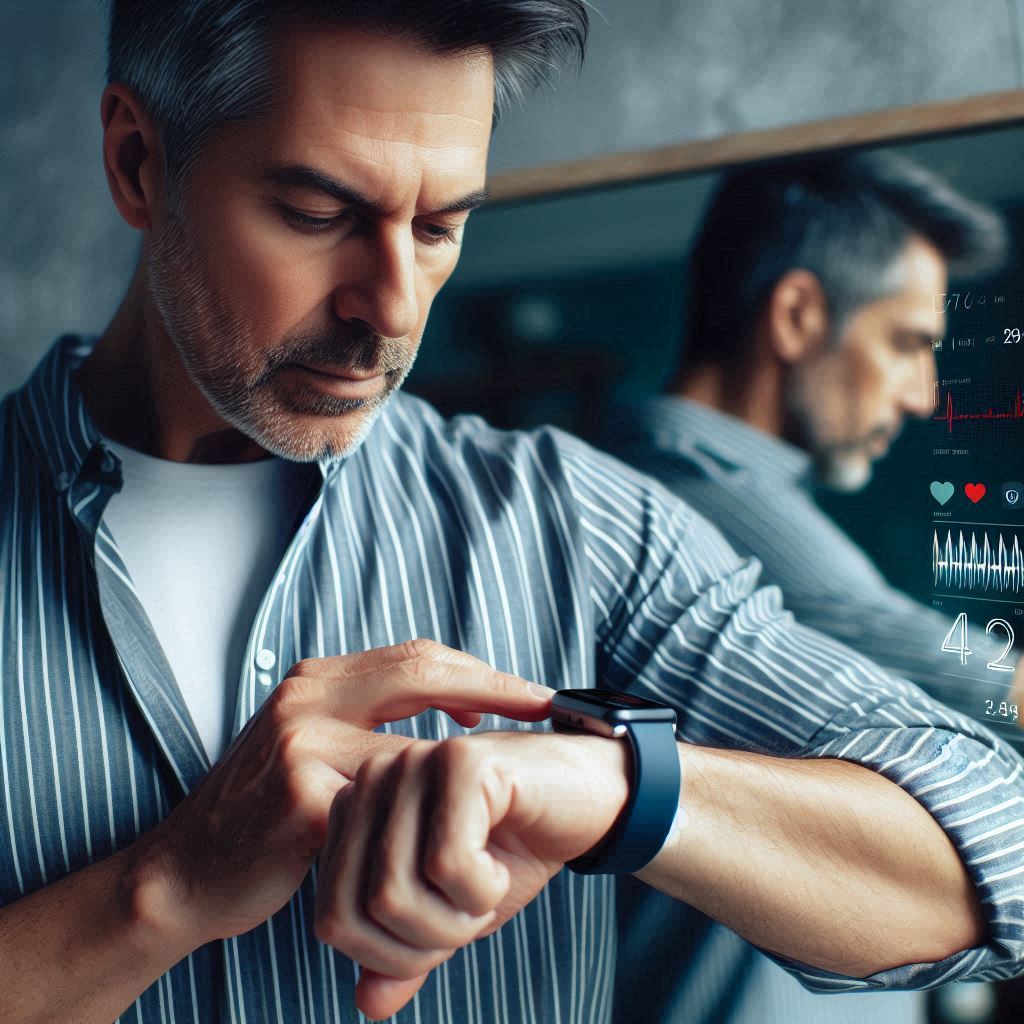Introduction
Let’s explore wearable tech software for chronic disease management
Explanation of chronic diseases and their prevalence
Chronic diseases significantly impact global health.
Conditions such as diabetes, hypertension, and heart disease affect millions worldwide.
According to the World Health Organization, chronic diseases account for approximately 71% of all deaths annually.
The increasing prevalence of these conditions underscores the need for effective management strategies.
Overview of wearable technology and its advancements
Wearable technology has emerged as a transformative solution.
Devices like smartwatches and fitness trackers have advanced in functionality and accessibility.
They now monitor vital signs, physical activity, and sleep patterns in real time.
This technology empowers users to take control of their health by providing valuable data.
Importance of software in the application of wearable tech for chronic disease management
Software plays a crucial role in wearable tech.
It enables the collection, analysis, and presentation of health data.
Advanced algorithms and user-friendly interfaces enhance the user experience.
These software solutions facilitate personalized feedback and recommendations tailored to individual needs.
Integrating wearable tech with chronic disease management improves patient outcomes.
Users can track their symptoms and vital statistics consistently.
This ongoing monitoring provides healthcare providers with valuable insights into patient health trends.
As a result, providers can make timely adjustments to treatment plans.
Furthermore, software applications offer reminder functions for medication and appointments.
This feature increases adherence to treatment regimens, which is often a challenge for chronic disease patients.
With a proactive approach to health management, patients experience better disease control.
Wearable tech software also promotes patient engagement.
Users can access educational resources and support networks directly through their devices.
Empowering patients with knowledge fosters a greater understanding of their conditions.
In summary, the convergence of wearable technology and software is revolutionizing chronic disease management.
As these tools continue to evolve, they hold the potential to significantly improve health outcomes.
With better data collection and personalized insights, we can better manage chronic diseases effectively.
Understanding Chronic Diseases
Chronic diseases can significantly affect individual lives and healthcare systems globally.
These conditions persist over a long period and usually require ongoing management.
Unlike acute diseases that come on suddenly and typically resolve, chronic diseases develop over time.
Understanding these diseases is essential for effective management.
Definition and Types of Chronic Diseases
Chronic diseases encompass a wide range of health issues.
They usually result from a combination of genetic, environmental, and lifestyle factors.
The following list identifies some common chronic diseases:
- Diabetes: A condition that affects the body’s ability to process glucose.
- Heart Disease: This includes various heart-related conditions, such as coronary artery disease.
- Chronic Respiratory Conditions: Includes asthma and chronic obstructive pulmonary disease (COPD).
- Hypertension: High blood pressure that can lead to severe complications, including stroke.
- Arthritis: Involves inflammation of the joints, causing pain and dysfunction.
- Cancer: A group of diseases characterized by uncontrolled cell growth.
Each chronic disease presents unique challenges and requires tailored management strategies.
Effective management focuses on improving patients’ quality of life.
We Design & Develop Websites, Android & iOS Apps
Looking to transform your digital presence? We specialize in creating stunning websites and powerful mobile apps for Android and iOS. Let us bring your vision to life with innovative, tailored solutions!
Get Started TodayStatistics on the Impact of Chronic Diseases
Chronic diseases contribute significantly to global health burden.
They affect millions of individuals and have wide-reaching implications.
Consider the following statistics:
- According to the World Health Organization, chronic diseases account for 71% of global deaths.
- Over 1.7 billion people live with at least one chronic condition worldwide.
- Chronic diseases lead to approximately $3.7 trillion in annual healthcare costs in the United States alone.
- In the U.S., 60% of adults had at least one chronic condition in 2016.
- Diabetes prevalence has steadily increased, affecting more than 422 million people globally by 2014.
These statistics underscore the urgent need for effective management strategies.
As chronic diseases rise, so does their economic impact on healthcare systems.
The Need for Effective Management Strategies
Improving chronic disease outcomes requires proactive management.
Individuals must engage in ongoing self-care, while healthcare providers focus on preventative measures.
Here are several key reasons why effective management strategies are essential:
- Prevention of Complications: Chronic diseases can lead to severe complications. Effective management reduces this risk.
- Improved Quality of Life: Individuals with chronic conditions can lead fulfilling lives with effective management.
- Healthcare Cost Reduction: Better management can significantly reduce healthcare costs over time.
- Patient Empowerment: Engaging patients in their care leads to better adherence to treatment plans.
- Interdisciplinary Approaches: Collaboration between various healthcare professionals enhances care quality.
Each of these reasons highlights why chronic disease management must be a priority.
As technology evolves, new solutions, such as wearable tech, play a pivotal role in this process.
Read: AI Chatbots for Health Advice and Patient Support
Overview of Wearable Technology
Wearable technology represents a revolutionary advancement in health and fitness.
It refers to electronic devices that individuals wear on their bodies.
These devices enhance daily activities and offer significant health insights.
Common examples include fitness trackers, smartwatches, and health monitors.
Each part of this technology serves unique purposes and fosters personal wellness.
Definition of Wearable Technology
Wearable technology specifically denotes gadgets that people wear.
These devices integrate seamlessly into everyday life.
Their primary goal is to track health metrics and improve overall well-being.
They come in various forms and styles, making them accessible and user-friendly.
Popular examples of wearable technology include:
- Fitness Trackers: These devices monitor physical activity levels, such as steps taken, calories burned, and intensity of workouts.
- Smartwatches: Smartwatches offer time tracking, notifications, and health monitoring features such as heart rate monitoring.
- Health Monitors: These specialized devices can track vital signs, glucose levels, and more, enhancing medical oversight.
- Smart Clothing: This advanced wearables track biometrics directly through the fabric, such as heart rate or posture.
Discussion on Evolution of Wearable Tech
Wearable technology has evolved significantly over the last decade.
Initially, wearables focused primarily on fitness-related functions.
Early devices often lacked advanced capabilities and relied on simple metrics.
However, advancements in sensor technology and data analytics have transformed wearables.
Many recent devices offer comprehensive health monitoring.
They now track heart rate, sleep patterns, and even stress levels.
Current smartwatches can also access smartphone apps, enhancing their functionality.
As a result, users gain multiple features in a single device.
Technology has driven the evolution of wearables.
For instance, sensors have become more precise and efficient.
Improved battery life enables longer use without the need for frequent recharging.
Additionally, the integration of artificial intelligence (AI) plays a crucial role in data interpretation.
Insight into the Technology Behind Wearables
Wearable technology integrates sophisticated components that capture vital health data.
Sensors like accelerometers, gyroscopes, and optical sensors measure movement, heart rate, and other metrics.
We Design & Develop Websites, Android & iOS Apps
Looking to transform your digital presence? We specialize in creating stunning websites and powerful mobile apps for Android and iOS. Let us bring your vision to life with innovative, tailored solutions!
Get Started TodayData analytics software then processes these measurements, transforming complex information into understandable health metrics.
Users visualize their health trends through mobile apps, promoting informed decisions about wellness.
Connectivity through the Internet of Things (IoT) enables wearables to sync with other devices, creating a comprehensive view of health.
These devices operate as part of an integrated health ecosystem, enhancing patient care.
Cloud computing supports wearable technology by storing extensive health data, allowing users to access information across devices.
This approach offers continuity in health monitoring, enabling users to track progress over time.
Key benefits of wearable technology include:
- Real-time Data: Provides immediate health feedback, empowering proactive health management.
- Accessibility: Cloud-based storage ensures users can monitor health data over time.
- Enhanced Care: Integration with IoT supports a connected health experience.
Advancements in biometric sensors and predictive analytics will likely boost chronic disease management.
AI and machine learning innovations will enhance personalization, tailoring wearables to individual needs.
Collaboration between healthcare providers and wearables can support chronic disease management by building personalized care plans based on real-time data.
Wearable technology offers vast potential to reshape health care.
Its integration into healthcare systems deepens as devices become more functional and personalized.
The future promises more effective chronic disease management and enriched lives for users through wearable advancements.
Read: Cloud-Based Medical Imaging Software for Diagnostics
The Role of Software in Wearable Tech
Wearable technology is transforming chronic disease management, and software plays a crucial role.
It enhances the functionality and usability of wearable devices.
Users can leverage this technology to track their health in real time.
Innovative software solutions lead to enhanced data accuracy and insights.
This section explores how software integrates with wearable tech.
How Software Enhances Wearable Device Functionality
Software acts as the backbone of wearable tech.
It enables these devices to collect, analyze, and present health data in comprehensible ways.
Here are some ways software enhances functionality:
- Real-time Data Collection: Software allows devices to continuously monitor vital signs. This process helps users stay informed about their health status.
- Data Analysis: Advanced software analyzes the collected data. It identifies patterns and trends, enabling proactive health management.
- User-Friendly Interfaces: Software provides intuitive interfaces. This helps users easily navigate and understand their health data.
- Alerts and Reminders: Software can send alerts for medication or check-ups. These reminders ensure patients stay compliant with treatment plans.
- Remote Monitoring: It facilitates telemedicine options, allowing healthcare professionals to monitor patients from afar.
Clearly, robust software solutions enrich the user experience.
They transform wearables into powerful tools for chronic disease management.
The right software not only increases functionality but also encourages user engagement.
Types of Software Used in Wearable Tech
Various software types contribute to the effectiveness of wearable technology.
Understanding these software types can help users choose the right devices.
Here are some prominent categories:
- Mobile Apps: Many wearables sync with dedicated mobile applications. These apps help users track health metrics conveniently.
- Cloud Services: Cloud technology enables seamless data storage and access. Users can view their data from multiple devices.
- Machine Learning Algorithms: Machine learning helps in predictive analytics. It allows wearables to provide actionable insights based on historical data.
- API Integrations: Wearables often integrate with other health applications. APIs facilitate sharing data across platforms, enriching the user experience.
- Data Security Software: This software protects personal health information. Ensuring data privacy builds user trust and encourages usage.
Each software type fulfills specific roles in the wearables ecosystem.
They collectively enhance the overall efficacy of these devices, promoting better health outcomes.
Integration of Software with Wearable Devices
The integration of software with wearable devices is vital.
It ensures seamless data flow and user experience.
Here are some aspects to consider in this integration:
- Synchronization: Software must synchronize flawlessly with wearable devices. This synchronization allows for accurate data collection and analysis.
- User Interfaces: A well-designed user interface enhances usability. Users should not struggle to navigate the software or understand their data.
- Compatibility: Software should be compatible with various operating systems. This ensures a wider range of device use among users.
- Data Visualization: Effective data representation is crucial. Graphical interfaces make it easier to interpret health information at a glance.
- Real-time Updates: Software should provide real-time updates on health metrics. This helps users take immediate actions when necessary.
These integration elements directly impact user engagement and effectiveness.
When users find functionality easy to navigate, they engage more actively with their health data.
We Design & Develop Websites, Android & iOS Apps
Looking to transform your digital presence? We specialize in creating stunning websites and powerful mobile apps for Android and iOS. Let us bring your vision to life with innovative, tailored solutions!
Get Started TodayBenefits of Using Software in Wearables for Chronic Disease Management
The benefits of integrating software into wearable devices for chronic disease management are numerous.
They contribute significantly to improving patients’ quality of life.
Here’s a breakdown of some key benefits:
- Personalized Health Insights: Software tailors health suggestions to individual needs. This personalization fosters better health management.
- Improved Communication: Software enables better communication with healthcare providers. Patients can share their metrics easily and receive timely feedback.
- Enhanced Motivation: Gamification features in software encourage users to remain active. Engaging interfaces can motivate users to stick to their health regimes.
- Accessibility: Remote monitoring empowers patients in rural areas. Patients can access healthcare from the comfort of their homes.
- Improved Treatment Compliance: Reminders and alerts from software help patients follow treatment plans more closely. This compliance leads to better health outcomes.
Overall, software significantly boosts the capabilities of wearable devices.
It powers essential processes that lead to improved chronic disease management.
Software serves as the foundation of wearable technology designed for chronic disease management.
It enhances functionality, provides valuable analytics, and offers a seamless user experience.
By understanding how software integrates with these devices, users can make better choices for their health.
As technology continues to evolve, we can expect even more innovations in wearable tech software.
Ultimately, this progress promises a brighter future for chronic disease management.
Read: Virtual Reality for Post-Surgery Rehabilitation

Benefits of Wearable Tech Software for Chronic Disease Management
Wearable technology continues to revolutionize chronic disease management.
This innovation offers unprecedented opportunities for enhancing patient care.
Patients now have tools that empower their health journey.
Let’s delve into the benefits of wearable tech software in managing chronic diseases.
Real-time Health Monitoring and Data Tracking
Wearable technology enables real-time health monitoring.
Devices track vital signs like heart rate, blood pressure, and blood glucose levels.
This continuous monitoring can detect health changes quickly.
As a result, healthcare providers can act on the data immediately.
Here are several key aspects of real-time health monitoring with wearables:
- Data collection is automated, reducing manual input errors.
- Wearables can alert patients and doctors to concerning changes.
- Data can be analyzed remotely, saving patients unnecessary trips.
- This technology captures data over time, revealing long-term trends.
- Integration with electronic health records ensures seamless data sharing.
Real-time health monitoring thus creates a proactive healthcare environment.
Patients feel more secure knowing they are monitored closely.
This feature leads to quicker interventions during health crises.
Ultimately, this can prevent complications and hospital admissions.
Personalized Healthcare Recommendations and Alerts
Wearable tech software can offer personalized health recommendations.
These recommendations are based on individual health data trends.
Algorithms analyze personal data to provide tailored advice.
This customization enhances patient decision-making regarding health behaviors.
Alerts generate timely suggestions for lifestyle changes.
For example, if a patient’s heart rate spikes, the device can advise calming techniques.
If blood sugar levels drop, it can suggest immediate dietary adjustments.
This leads to better management of chronic conditions.
The personalized approach provides several significant benefits:
- Improved adherence to medication and lifestyle changes.
- Reduction in healthcare costs through preventive care.
- Patients feel empowered and informed about their health.
- Timely alerts can guide lifestyle modifications in real-time.
- Continuous feedback fosters accountability among patients.
By offering personalized recommendations and alerts, wearables play a crucial role.
They help patients manage their conditions more effectively.
We Design & Develop Websites, Android & iOS Apps
Looking to transform your digital presence? We specialize in creating stunning websites and powerful mobile apps for Android and iOS. Let us bring your vision to life with innovative, tailored solutions!
Get Started TodayConsequently, these devices inspire a more proactive approach to health.
Improved Patient Engagement and Adherence to Treatment Plans
Incorporating wearable technology encourages patient engagement.
Patients become active participants in their healthcare journeys.
Wearable devices provide instant feedback, fostering motivation.
This engagement leads to improved adherence to prescribed treatment plans.
Several factors contribute to heightened patient involvement:
- Wearables often feature user-friendly apps that track progress.
- Social sharing capabilities allow friends and family support.
- Gamification elements, like challenges, boost motivation.
- Patients can set personal health goals and monitor achievements.
- The immediacy of data inspires timely adjustments in behavior.
Engagement fuels a deeper connection between patients and their health.
As patients stay informed, they feel a larger stake in their outcomes.
This leads to greater commitment to follow treatment protocols, resulting in better health outcomes.
Case Studies and Examples of Successful Implementations
Several organizations successfully implement wearable technology for chronic disease management, offering valuable insights and lessons.
These case studies demonstrate wearable tech’s real-world impact on patient care.
Key Examples
- Diabetes Management: A hospital network launched a remote monitoring program using wearables to track blood sugar and activity levels.
Participants saw improved glycemic control and fewer hospital visits. - Heart Disease: A health insurance provider introduced a wearable program for heart patients, alerting them to potential heart rhythm issues.
The initiative reduced ER visits by 30% and improved medication adherence. - Chronic Obstructive Pulmonary Disease (COPD): A telehealth startup used wearables to monitor COPD patients’ oxygen levels.
The continuous data stream allowed timely interventions, lowering hospital readmissions. - Hypertension: A public health initiative provided wearables for hypertensive patients, enabling them to track blood pressure and receive automated feedback.
This approach led to notable reductions in hypertension. - Mental Health: A wellness app utilized wearables to monitor stress levels, delivering real-time feedback and relaxation techniques.
This approach improved user satisfaction and healthier coping mechanisms.
These case studies reveal wearable tech’s diverse applications in chronic disease management.
The outcomes emphasize wearable tech’s potential to transform patient care.
Benefits of Wearable Tech
- Real-time monitoring enables continuous tracking of vital signs.
- Personalized recommendations empower patients to make informed health decisions.
- Increased engagement encourages treatment adherence.
As more healthcare providers recognize wearable technology’s benefits, adoption will likely grow.
This integration can redefine chronic disease care, offering improved patient outcomes and a hopeful future in health management.
Read: Wearable Health Device Integrations with Custom Software Solutions
Challenges and Limitations of Wearable Tech Software
Wearable tech software has transformed chronic disease management.
However, it also brings an array of challenges and limitations.
These issues need consideration for successful integration into healthcare.
Below are some key problems associated with wearable tech software.
Data Privacy and Security Issues
Data privacy and security have become paramount in today’s digital age.
Wearable devices collect sensitive health information.
This raises significant concerns regarding who has access to this data and how it is used.
The following highlights the critical issues in this area:
- Unauthorized Access: Cyber-attacks can target wearable devices, potentially exposing personal health data.
- Data Sharing Policies: Many wearable tech companies collect user data for marketing purposes without clear consent.
- Lack of Regulation: Currently, regulations on health data privacy may not adequately protect users.
- Data Breaches: Security breaches can happen, exposing large amounts of sensitive health information.
- Consent Mechanisms: Users often do not understand or properly provide consent for their data usage.
To navigate these challenges, companies must prioritize data security.
Robust encryption and transparent data policies are essential.
Users should also receive clear information on how their data is used.
Limitations in Accuracy and Reliability of Health Data
Wearable tech – while innovative – often struggles with accuracy.
The effectiveness of these devices hinges on the reliability of the data they provide.
Here are some prevalent inaccuracies:
- Calibration Issues: Devices require regular calibration to maintain accuracy; users may overlook this step.
- Variability Among Devices: Different brands and models can report varying measurements, causing confusion.
- Environmental Influences: Factors like body temperature and movement can affect readings.
- Algorithm Limitations: Algorithms can misinterpret data input, leading to inaccurate health assessments.
- User Error: Inconsistent usage, such as improper wearing of devices, leads to unreliable data.
These limitations can significantly impact patient care.
Healthcare providers may misinterpret data derived from unreliable sources.
Improving the accuracy of wearables should be a priority for manufacturers.
Potential Disparities in Access to Wearable Technology
Not everyone has equal access to wearable technology.
This disparity can exacerbate existing health inequalities.
We Design & Develop Websites, Android & iOS Apps
Looking to transform your digital presence? We specialize in creating stunning websites and powerful mobile apps for Android and iOS. Let us bring your vision to life with innovative, tailored solutions!
Get Started TodayVarious factors contribute to this challenge:
- Socioeconomic Status: High costs of devices often exclude lower-income individuals from benefiting.
- Geographic Barriers: Rural areas may lack internet access, limiting the real-time utility of wearables.
- Education and Awareness: Lack of knowledge about wearable tech may prevent some individuals from using it beneficially.
- Insurance Coverage: Limited insurance plans may not cover wearable devices, creating financial barriers.
- Technological Literacy: Older adults or less tech-savvy individuals may struggle to adapt to new technology.
Tackling these disparities requires collaborative efforts.
Governments, healthcare organizations, and tech companies must work together.
Ensuring inclusive access to technology is vital for equitable health management.
User Adoption and Behavior Challenges
User adoption remains a significant challenge in wearable technology.
Many people find it difficult to integrate these devices into their daily lives.
The following highlights specific hurdles:
- Initial Reluctance: Some users may distrust data from wearables or doubt their effectiveness.
- Short Attention Span: People often lose interest over time, leading to device abandonment.
- Lack of Motivation: Without clear incentives, users may lack the motivation to regularly engage with the technology.
- Complexity of Use: Complicated interfaces or settings can deter users from maximizing device functionalities.
- Privacy Concerns: Fear regarding data collection and sharing can hinder adoption.
Overcoming these adoption barriers requires targeted strategies.
Education about the benefits of wearable tech can enhance user engagement.
Setting realistic expectations can also foster a consistent user experience.
Challenges surrounding wearable tech software in chronic disease management are evident.
Issues like data privacy and accuracy can hinder the technology’s effectiveness.
Additionally, disparities in access and user adoption present obstacles for comprehensive integration into healthcare systems.
Addressing these challenges systematically will enhance the usability and reliability of wearable devices.
Ultimately, collaborative efforts among stakeholders can pave the way for more effective chronic disease management solutions.
Future Trends in Wearable Tech Software for Healthcare
Wearable technology is transforming healthcare, particularly in managing chronic diseases.
As technology advances, we expect notable evolution in wearable tech software.
This evolution will enhance how patients interact with their devices and how healthcare providers monitor and manage chronic conditions.
Predictions for the Evolution of Wearable Technology
As we look to the future, several trends indicate significant advancements in wearable tech for chronic disease management:
- Enhanced Sensor Capabilities: Future wearable devices will likely feature improved sensors. These sensors will track an even wider range of health metrics, providing comprehensive data.
- Longer Battery Life: Researchers are working on extending battery life considerably. This improvement will allow for continuous monitoring without frequent recharging.
- Increased Customization: Users will experience greater customization in apps and user interfaces. This level of personalization will cater to individual health needs and preferences.
- Integration with Smart Home Devices: Wearables will increasingly connect with smart home technology. This integration will create a seamless health monitoring environment.
- Wearables as Diagnostic Tools: Future devices may evolve to provide preliminary diagnostic capabilities.
These capabilities could alert healthcare providers about potential health issues before they escalate. - Data Interoperability: Wearable devices will likely have improved data-sharing capabilities. This interoperability will facilitate communication between different health platforms and providers.
- Enhanced User Engagement: Future wearables will focus on increasing user engagement. This focus will involve gamification elements and rewards for achieving health goals.
The Role of Artificial Intelligence and Machine Learning
Artificial Intelligence (AI) and Machine Learning (ML) will play pivotal roles in enhancing wearable tech software:
- Predictive Analytics: AI algorithms will analyze historical data for predictive analytics. This capability will help foresee potential health issues before they arise.
- Personalized Health Recommendations: Machine learning will enable wearables to offer tailored health advice.
These personalized recommendations will depend on individual health metrics and behavior patterns. - Real-time Data Processing: AI will improve the ability to process and analyze data in real-time. This improvement will allow immediate response to critical health changes.
- Automated Alerts and Notifications: Machine learning will help create more intelligent alert systems. Users will receive notifications only when they are genuinely necessary based on their health trends.
- Virtual Health Assistants: AI-driven virtual assistants will help users navigate their health management. These assistants will answer questions and provide reminders about medications and appointments.
- Data Security Enhancements: AI technology will improve data security measures. This advance will protect sensitive health information stored within wearable devices.
- Optimization of Device Performance: Machine learning will optimize device performance over time. As the algorithm learns from user behavior, it will improve functionality and user experience.
Potential for Integration with Telehealth and Remote Monitoring Solutions
Integration with telehealth and remote monitoring solutions represents a significant opportunity for wearable technology:
- Continuous Health Monitoring: Wearables can provide continuous monitoring, which telehealth can use. This continuous data flow allows for proactive health management.
- Enhanced Patient-Provider Communication: Wearables bridge the communication gap between patients and providers. Convenient access to real-time health data fosters stronger relationships.
- Reduction in Emergency Visits: With ongoing monitoring, wearables can reduce unnecessary emergency room visits. Timely alerts about health conditions can prevent crises.
- Improved Patient Compliance: Wearable devices can remind users to adhere to treatment plans. This feature encourages patients to take medications and follow health protocols.
- Expanded Remote Patient Monitoring (RPM): Telehealth can leverage wearables for RPM. This expansion helps clinicians monitor patients without needing in-person visits.
- Better Chronic Disease Management: The integration allows for more effective management of chronic diseases. Ongoing feedback enables personalized care adjustments based on real-time data.
- Cost-Effectiveness: Telehealth paired with wearables can enhance cost-effectiveness in healthcare. This approach minimizes hospitalizations and streamlined care improves financial outcomes.
Despite the numerous advancements in wearable tech software, challenges remain.
Privacy concerns regarding data security demand innovative solutions.
Health professionals and technology developers must collaborate to achieve comprehensive solutions.
The goal is to ensure patient safety while maximizing the benefits of these emerging technologies.
As wearable tech continues to evolve, patients may find themselves more empowered in their health journeys.
The future of chronic disease management appears promising with ongoing innovations.
Wearable technology will increasingly play a vital role in enhancing patient care and improving health outcomes.
In short, the future landscape of wearable tech software promises remarkable enhancements.
With the integration of AI, telehealth, and advanced sensor capabilities, patients can expect exceptional support.
As these technologies evolve, they will shape the next generation of healthcare delivery for chronic diseases.
Conclusion
Recap of the transformative potential of wearable tech software in managing chronic diseases
Wearable tech software has the potential to revolutionize chronic disease management.
These innovative tools enhance patient engagement and empower individuals to take charge of their health.
They provide real-time data, enabling patients to communicate effectively with healthcare providers.
This constant flow of information leads to personalized care tailored to individual needs.
We Design & Develop Websites, Android & iOS Apps
Looking to transform your digital presence? We specialize in creating stunning websites and powerful mobile apps for Android and iOS. Let us bring your vision to life with innovative, tailored solutions!
Get Started TodayFurthermore, wearable devices can monitor vital signs continuously.
They track heart rate, glucose levels, and other health metrics, offering valuable insights.
As a result, both patients and doctors can identify problems early and adjust treatment accordingly.
This proactive approach helps prevent complications often associated with chronic conditions.
Collaboration is key in maximizing the benefits of wearable tech.
Developers should create user-friendly applications that integrate seamlessly with existing systems.
Healthcare providers need proper training to use these technologies effectively.
Patients must learn how to utilize the software to enhance their health management actively.
Call to action for stakeholders (developers, healthcare providers, patients) to embrace and invest in such technologies
Investing in wearable tech solutions is crucial for stakeholders at all levels.
Healthcare providers should advocate for policies that support technology adoption in clinical settings.
Developers must prioritize user needs to ensure their products truly enhance the patient experience.
Patients are encouraged to engage with these technologies, ensuring they benefit from their features.
Final thoughts on the future of chronic disease management with wearable tech solutions
As we look ahead, the future of chronic disease management includes wearable tech solutions.
These technologies will continue to evolve and incorporate artificial intelligence and machine learning.
Such advancements will further enhance personalized care options and improve patient outcomes.
Wearable tech software presents a transformative opportunity for managing chronic diseases.
By embracing these innovative solutions, stakeholders can improve patient quality of life.
The future holds great promise as we work together to integrate these technologies into healthcare practices.
Before You Go…
Hey, thank you for reading this blog post to the end. I hope it was helpful. Let me tell you a little bit about Nicholas Idoko Technologies.
We help businesses and companies build an online presence by developing web, mobile, desktop, and blockchain applications.
We also help aspiring software developers and programmers learn the skills they need to have a successful career.
Take your first step to becoming a programming expert by joining our Learn To Code academy today!
Be sure to contact us if you need more information or have any questions! We are readily available.
Put Your Tech Company on the Map!
Get featured on Nicholas Idoko’s Blog for just $200. Showcase your business, boost credibility, and reach a growing audience eager for tech solutions.
Publish Now










